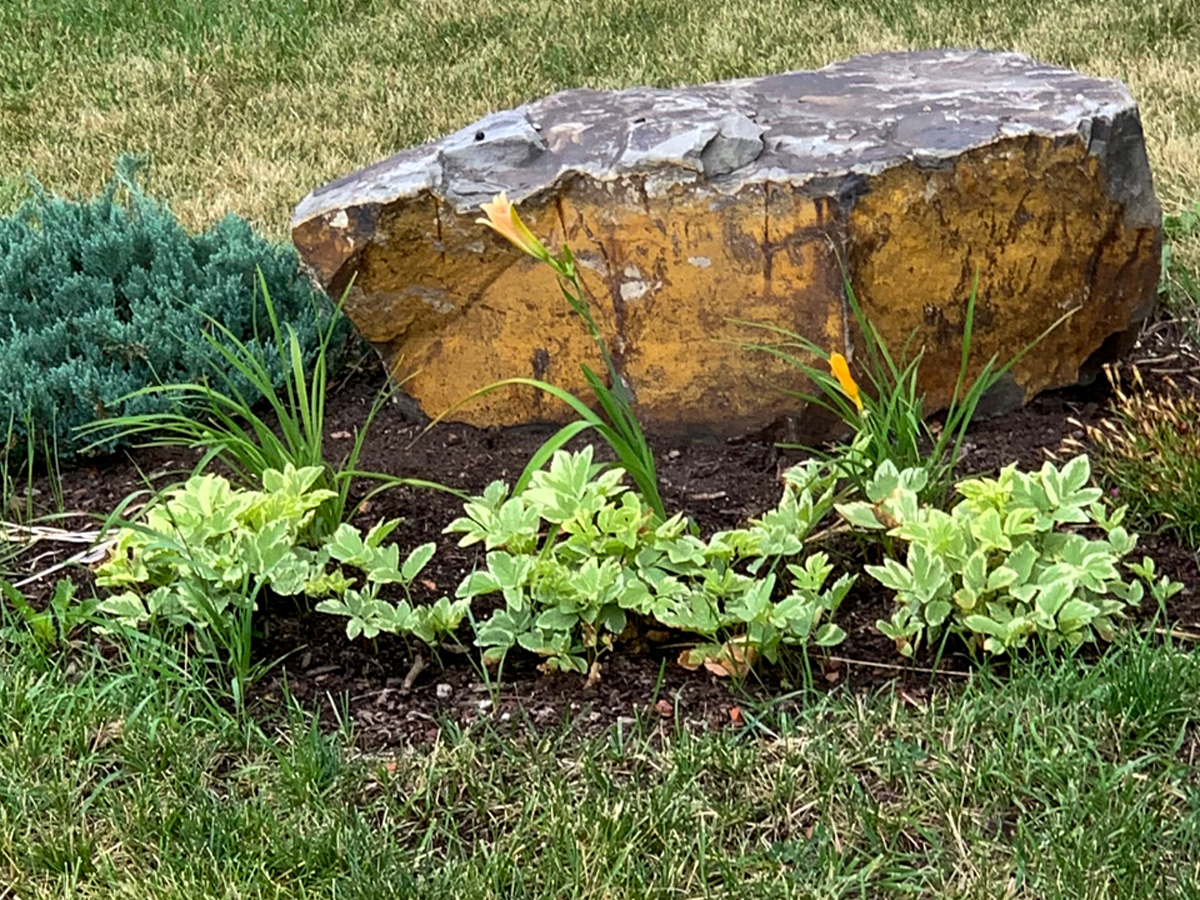Gardening friends and foes

Photo by Deborah Maier
Gardeners can have strong opinions about plants. Often, these opinions have been formed through experience … and more often than not, after waging battle with a plant that thrives where it has been planted—and beyond!
If you want to see looks of dismay, or hear a few negative remarks, just mention to a group of gardeners that you bought lily-of-the-valley or that you grow snow-on-the-mountain.
Like many garden plants that have ended up on the invasive species list, plants that make a gardener’s naughty list are plants that were naively selected without a clear understanding of their growing habits and planted without having checks to keep them in control.
Plants that were once sold for gardens, that are now on the invasive species list, are often prolific, but have also spread beyond the garden and are harmful to the environment.
While we may grow a plant because we think it is beautiful, its purpose is to replicate itself.
Plants that get out of control in our gardens often are successful because they have more than one effective method of propagation. The two most common ways are seed formation and rhizome spread.
So, how can you tell in advance if a plant could become a challenge in the garden? When selecting a plant, read the plant tag.
Watch for words such as ground cover, spreading, vigorous, mat-forming, tough, fast-growing, aggressive, and naturalizing.
These words may describe plant features we are looking for, but they are also terms that indicate that if it is planted in its ideal environment, these plants can become established quickly and may out-compete any other plant also planted in the area.
I like to use an isolated trial bed for any plant whose growing behaviour is unknown or could be aggressive.
The bed is away from other garden beds so there is little concern about seed spread. It is contained by a wall of the house and a gravel-filled trough.
Using this bed gives me an opportunity to see how the plant performs in my yard, in a restricted and less-than-ideal growing location.
If it thrives and spreads here, I know I need to be careful when selecting and creating a permanent home for it.
Another way to evaluate a plant is to talk to other gardeners that grow the plant and watch for it when visiting gardens.
Find out if they have trouble keeping it contained. Ask if they have any controls in place.
Barriers extending at least 20 cm into the soil help prevent the spread of roots and rhizomes. Several centimetres of mulch placed on the soil of a bed prevents seeds from taking root. Limiting water and fertilizer can also inhibit growth.
What should you do if you like the fragrance of lily-of-the-valley (Convallaria majalis)? Grow the plant, but remember it is a ground cover and will spread. Select an area with natural barriers or install barriers. While it prefers damp shade, it is one of the few plants that can survive the shade and dryness of being grown around a blue spruce tree.
However, before you buy these plants, post a request on a plant sharing site. There are many gardeners who would be happy to give you some.
When I first came to Calgary, many yards had snow-on-the mountain (Aegopodium podagraria ‘Variegatum’) growing next to the house foundation.
It was usually in the hard-to-grow location between two houses, in the rain shadow area under the eaves. It is another plant that can grow in dry shade.
Unless the plan is to fill the space between the houses (with your neighbour’s permission) with this plant, barriers should be used to prevent its spread.
I have found that keeping the ground dry where I don’t want it to grow and watering where I want it to be, helps to manage this plant.
I have neighbours who planted it in a bed in the middle of their lawn, and it has spread throughout the bed and lawn, so use it with caution.
Lily-of-the-valley and snow-on-the-mountain, are they garden friend or foe? It depends on where they are planted. For a harmonious garden, plant the right plant in the right place, and monitor!
To learn more about gardening in the Calgary area, visit our website calhort.org.
